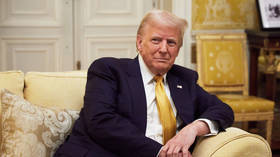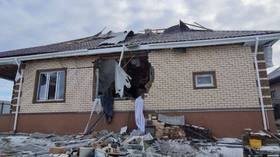Bridge between two Koreas collapsing
North Korea says it will restrict cross-border activities with South Korea, allowing fewer opportunities for separated families to meet with long-lost relatives. It marks a major cooling of relations between the two Cold War foes after a few years of hope.
Kim Nam Jip and Park Sun Hi met in South Korea after fleeing the North in 1950s during the Korean War. They left fearing they might be recruited by the Chinese army, which was approaching their hometowns. Kim Nam Jip was 29 and Park Sun Hi was just 18.
“When I was leaving I suggested to my father that we should go together. He said: ‘you go first with your friends and we will catch up with you later. And then let’s meet at the pier.’ I was waiting for my parents but there were so many people there I couldn’t find them,” recalls Park Sun Hi.
So she took the boat and went south hoping to meet her parents, two brothers and a sister there but they didn’t arrive. Almost 60 years have passed, and like her husband, she has never seen her family since.
“Every time I went to the beach I climbed a rock and looked at the ocean, and felt very sad and lonely. I felt really desperate at the time, was so angry at myself, asking ‘Why did I come here alone? what am I doing here? Why have I survived?’ It would be better if I died,” Park Sun Hi gasps.
The Red Cross estimates more than 10 million Koreans were separated during the conflict.
Meanwhile, the two neighbours are still technically at war as a peace treaty has never been signed. There are no postal, telephone or e-mail exchanges between ordinary citizens in the two countries.
Some progress was made in 2000 when the Korean leaders agreed to establish a reunification programme for separated families.
Lee Won Bok was one of the lucky few invited by the Red Cross, which conducts these programmes, to meet her cousin in North Korea. Around 100 other South Koreans travelled to the North.
However, when she arrived it wasn’t how she imagined it would be. Their conversations were tightly controlled by the North Korean guards.
“I talked to him about anything I wanted to, but I am not sure that he could do the same, especially about North Korea. He only talked about his family,” Lee Won Bok says.
She says they were not allowed to exchange contacts and for her, like for many other families, it was their first and most probably their last meeting.
For those who still haven’t found their loved ones, time is running short. Thirty per cent of those who applied to meet their lost family members died before their dreams could come true.
Park Sun Hi says she doesn’t even qualify to be on the waiting list. At 76 she says she’s still too young. Her 88-year-old husband is on the list, but he’s still waiting for his invitation from the Red Cross.
Since South Korean President Lee Mun Back took office in 2008, relations between the two neighbours have again deteriorated. No reunions have been held this year and they’ve been postponed indefinitely. As both countries blame each other for the halt, the chances of meeting family members after a separation of more than half a century are fading.
Kim Jong-il: dead, alive or using a body double?
The mystery of Kim Jong-Il: often heard of, rarely seen
North Korea to close border with South












